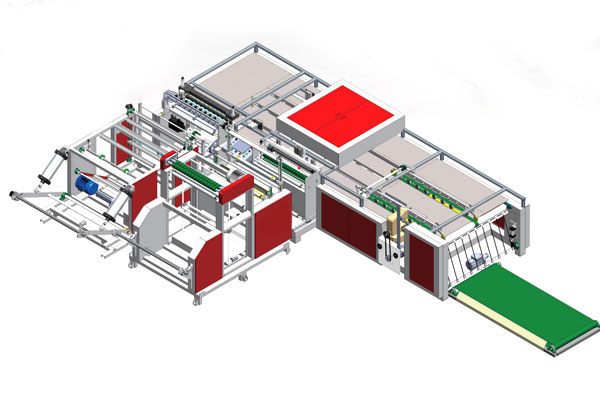


Cutting and sewing machines are indispensable in the manufacturing process of custom plastic products, offering precision and versatility in shaping and assembling materials. These machines play a crucial role in various industries, including packaging, textiles, automotive, and consumer goods. This comprehensive guide explores the functionalities, processes, applications, and technological advancements of cutting and sewing machines, emphasizing their significance in achieving high-quality, customized plastic products.
Cutting and sewing machines encompass a range of equipment designed for specific tasks in plastic product manufacturing:
• Cutting Machines: Utilized for precise cutting of plastic sheets, films, and profiles to desired dimensions and shapes.
• Sewing Machines: Used to stitch or weld plastic components together, ensuring secure and durable seams.
Cutting machines for plastic materials include:
• Guillotine Cutters: Ideal for straight-line cuts on plastic sheets and films.
• Rotary Cutters: Used for curved or intricate cuts with high precision.
• Laser Cutters: Employ laser technology for precise and clean cuts on various plastic materials.
Sewing machines for plastic products include:
• Heat Sealing Machines: Utilize heat and pressure to weld thermoplastic materials together.
• Ultrasonic Welding Machines: Generate high-frequency vibrations to bond plastic parts without adhesives.
• RF (Radio Frequency) Welding Machines: Use electromagnetic energy to fuse thermoplastic materials at the molecular level.
Cutting and sewing machines are employed in diverse applications across industries:
• Packaging: Manufacturing of plastic bags, pouches, and packaging containers.
• Textiles: Production of synthetic clothing, upholstery, and accessories.
• Automotive: Fabrication of interior components, seat covers, and trim panels.
• Consumer Goods: Creation of plastic cases, covers, and household products.
Integration of automation enhances efficiency and reduces labor costs:
• Automated Cutting Systems: Programmable machines for batch production with minimal human intervention.
• Robotics in Sewing: Robots perform repetitive sewing tasks with high precision and speed.
Digital technologies optimize machine operations and monitor performance:
• PLC (Programmable Logic Controller) Systems: Control and synchronize cutting and sewing processes for consistency.
• IoT Sensors: Collect real-time data on machine status, material usage, and productivity for predictive maintenance.
Achieving precision in cutting and sewing plastic products involves:
• Material Selection: Choosing appropriate plastics for desired properties and applications.
• Tooling Design: Designing cutting blades and sewing fixtures tailored to specific product requirements.
• Quality Control: Inspecting finished products to ensure dimensional accuracy and seam integrity.
Efforts in sustainability include:
• Recyclable Materials: Using recyclable plastics and reducing waste during manufacturing.
• Energy-Efficient Processes: Optimizing machine operations to minimize energy consumption.
• Reusable Packaging: Creating reusable plastic products to reduce environmental impact.
In conclusion, cutting and sewing machines are indispensable tools in the precision processing of custom plastic products across various industries. By leveraging advanced technologies such as automation, digital control, and IoT integration, manufacturers can enhance production efficiency, improve product quality, and meet the demands of a competitive market. Continuous innovation and adaptation to technological advancements will drive the evolution of cutting and sewing machines, ensuring their role as essential components in modern manufacturing.